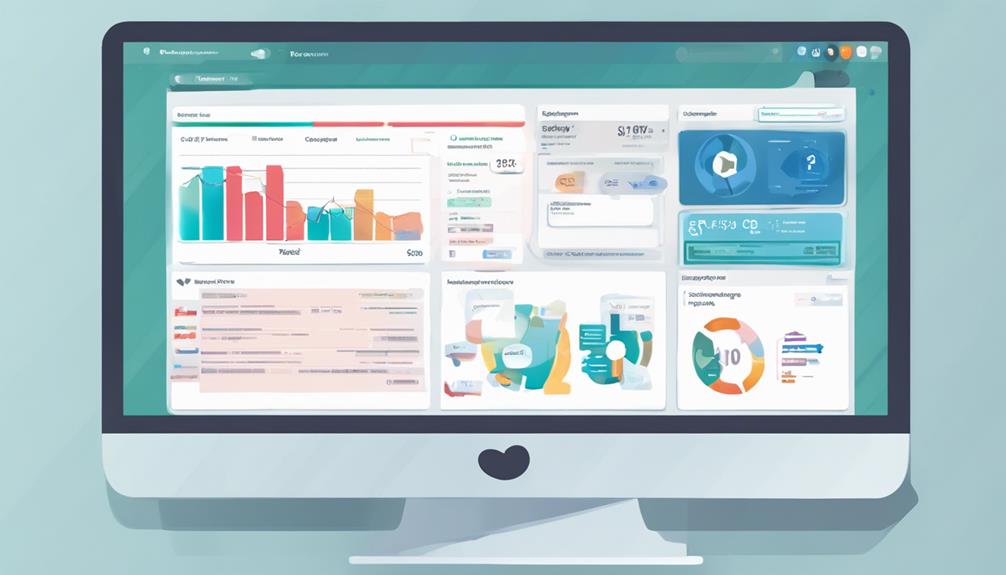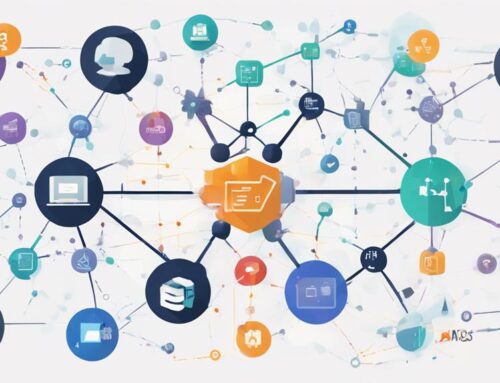To enhance B2B customer profiling with data enrichment, you need to understand the importance of accurate and up-to-date information. By leveraging data enrichment tools, you can uncover hidden insights about your clients that go beyond basic demographics. This not only allows you to tailor your marketing strategies more effectively but also enables you to anticipate future trends and behaviors. Stay tuned to discover the practical steps you can take to elevate your B2B customer profiling game and gain a competitive edge in your industry.
Identify Key Customer Attributes
Identifying key customer attributes is a foundational step in enhancing B2B customer profiling. Through customer segmentation, you can categorize clients based on shared characteristics, behaviors, or needs. This process allows for tailored marketing strategies that resonate with specific customer segments, leading to higher engagement and conversion rates. Industry targeting is another critical aspect when identifying key customer attributes. Understanding the unique challenges, trends, and preferences within different industries enables you to customize your approach and messaging effectively. By analyzing data related to industry-specific demands and pain points, you can align your products or services to meet the distinct needs of each sector. This targeted approach not only enhances customer satisfaction but also increases the likelihood of building long-lasting relationships with clients. Therefore, by focusing on customer segmentation and industry targeting to identify key customer attributes, you can optimize your B2B customer profiling efforts and drive meaningful results.
Gather Customer Data
To enhance your B2B customer profiling, it is crucial to employ effective data collection methods. By gathering data through various channels such as online forms, surveys, and social media interactions, you can obtain valuable insights into your customers’ preferences and behaviors. Additionally, conducting regular data quality checks ensures the accuracy and relevance of the information collected for more informed decision-making processes.
Data Collection Methods
When acquiring essential data to enhance B2B customer profiling, selecting appropriate data collection methods is crucial. To ensure the accuracy and completeness of the data gathered, consider the following methods:
- Surveys and Questionnaires: Implementing surveys and questionnaires allows you to directly request information from customers, enabling data validation by cross-referencing responses with existing records. This method also facilitates data enhancement by capturing additional details about preferences and behaviors.
- Website Tracking and Analytics: Leveraging website tracking tools provides valuable insights into customer interactions and behaviors online. By analyzing this data, you can validate customer preferences and enhance customer profiles with information on browsing habits and engagement patterns.
- Social Media Monitoring: Monitoring social media platforms allows you to gather real-time data on customer sentiments, interests, and interactions. This method aids in both data validation by verifying customer feedback and data enhancement through the acquisition of new insights into customer behavior patterns.
Data Quality Check
For effective B2B customer profiling, ensuring the accuracy and reliability of gathered customer data is paramount. Conducting a data quality check is crucial to guarantee data accuracy and completeness. Data accuracy refers to the correctness and precision of the information collected, ensuring that it is free from errors or inconsistencies. By verifying the accuracy of customer data, you can rely on it to make informed business decisions and tailor personalized marketing strategies effectively.
Additionally, data completeness involves having all the necessary information about a customer to build a comprehensive profile. This includes details such as contact information, company size, industry, purchasing behavior, and any other relevant data points. Incomplete data can lead to gaps in your customer profiles, hindering your ability to understand and meet your customers’ needs accurately.
Enrich Customer Profiles
Enhancing B2B customer profiling involves a crucial step known as enriching customer profiles. By enhancing your customer profiles, you can improve targeting and enhance personalization to better meet the needs of your clients. Here are three key ways enriching customer profiles can benefit your B2B strategy:
- Detailed Demographic Data: By enriching customer profiles with detailed demographic information such as industry, company size, and job roles, you can tailor your marketing efforts more effectively to specific segments within your target audience.
- Behavioral Insights: Enriched customer profiles can include valuable behavioral data such as past purchases, website interactions, and engagement with marketing materials. This information can help you create targeted campaigns that resonate with your customers on a more personal level.
- Predictive Analytics: Leveraging enriched customer profiles with predictive analytics can help you forecast future behaviors and preferences, allowing you to proactively adjust your strategies and offerings to better meet customer needs.
Segment Customer Base
To enhance your B2B customer profiling, begin by targeting specific industries within your customer base. Identify key characteristics shared by customers within these industries to create more refined segments. By customizing your marketing strategies based on these segments, you can effectively tailor your approach to meet the unique needs of each group.
Target Specific Industries
By targeting specific industries, you can effectively segment your customer base and tailor your B2B marketing strategies to meet the unique needs and preferences of each industry. Understanding industry insights and conducting competitive analysis are essential steps in this process.
Here are three key benefits of targeting specific industries:
- Customized Messaging: Tailoring your marketing messages to resonate with the particular pain points and goals of a specific industry can significantly improve engagement and conversion rates.
- Focused Resource Allocation: By concentrating your efforts on industries with the highest potential for growth and profitability, you can optimize your resource allocation and maximize ROI.
- Industry Partnerships: Targeting specific industries allows you to forge strategic partnerships with key players in those sectors, opening up opportunities for collaboration and mutual growth.
Identify Key Characteristics
When segmenting your B2B customer base, it is crucial to identify key characteristics that will allow you to categorize and target your customers more effectively. By delving into behavioral analysis and demographic segmentation, you can gain valuable insights into your customers’ preferences and patterns.
Behavioral analysis involves examining how customers interact with your products or services. This could include their purchasing history, frequency of purchases, or engagement with marketing campaigns. By understanding these behaviors, you can tailor your marketing strategies to better meet their needs and preferences.
On the other hand, demographic segmentation focuses on categorizing customers based on specific traits such as age, gender, location, or company size. This approach enables you to create targeted campaigns that resonate with different customer segments.
Customize Marketing Strategies
For optimizing your marketing strategies, segmenting your customer base is essential for achieving targeted success. By customizing your marketing strategies, you can tailor your approach to specific segments of your customer base, leading to more effective campaigns. Here are three key ways to enhance your marketing strategies through customer segmentation:
- Targeted Messaging: By segmenting your customer base, you can create targeted messaging that speaks directly to the needs and pain points of each group. This personalized approach increases engagement and conversion rates.
- Customized Offers: Through customer segmentation, you can identify unique preferences and behaviors within different customer segments. This allows you to create customized offers that resonate with each group, driving higher levels of interest and loyalty.
- Personalized Campaigns: With segmented customer data, you can create personalized marketing campaigns that cater to the specific interests of each customer segment. This level of personalization enhances the overall customer experience and boosts the effectiveness of your marketing efforts.
Personalize Customer Interactions
During customer interactions, personalization plays a crucial role in fostering strong B2B relationships. Utilizing targeted messaging and individualized recommendations can significantly enhance the quality of these interactions. Tailoring your communication to the specific needs and preferences of each customer showcases a deep understanding of their business and fosters a sense of value and importance.
By incorporating targeted messaging, you can ensure that your communication resonates with the recipient, addressing their pain points and offering relevant solutions. This approach increases the likelihood of engagement and conversion by showing that you understand their unique challenges and can provide tailored support.
Similarly, individualized recommendations based on detailed customer profiles can further enhance the personalization of interactions. By leveraging data enrichment techniques to gather insights on each customer’s preferences, buying behavior, and past interactions, you can offer tailored suggestions that align with their specific needs and interests. This level of personalization demonstrates a commitment to customer satisfaction and can help strengthen long-term B2B relationships.
Analyze Customer Behavior
To fully understand and cater to the needs of your B2B customers, it is imperative to analyze their behavior meticulously. By delving into their interactions and engagement patterns, you can unlock valuable insights that can guide your marketing strategies effectively. Here’s how you can enhance your B2B customer profiling through analyzing customer behavior:
- Predict Purchase: Track historical data on purchase behavior to identify trends and anticipate future buying decisions. Understanding what drives your customers to make purchases can help you tailor your offerings to meet their needs proactively.
- Analyze Engagement: Evaluate how customers interact with your content, emails, and website. By analyzing their engagement levels, such as click-through rates, time spent on pages, and responses to campaigns, you can gauge their interest and tailor your communication to be more personalized.
- Identify Patterns: Look for common behaviors or preferences among your customers. Identifying patterns in their interactions can help you segment your customer base effectively and deliver targeted messages that resonate with their specific needs.
Predict Future Customer Trends
Having scrutinized your B2B customer behavior closely, the next strategic step is to anticipate future trends that will shape their purchasing decisions. By leveraging customer segmentation and predictive analytics, you can gain valuable insights into emerging market trends and shifts in customer behavior.
Customer segmentation allows you to categorize your clients based on various criteria such as industry, company size, or purchasing patterns. This segmentation enables you to identify patterns and preferences within different customer groups, aiding in the prediction of future trends.
Predictive analytics, on the other hand, utilizes historical data and statistical algorithms to forecast future outcomes. By analyzing past customer interactions and transactions, predictive analytics can help you anticipate what products or services your B2B customers might be interested in next.
Frequently Asked Questions
How Can Data Enrichment Improve Customer Loyalty in B2B Relationships?
To improve customer loyalty in B2B relationships, data enrichment enhances customer retention by delivering personalized messaging. Accurate data aids in effective customer segmentation, allowing tailored strategies for building lasting relationships and fostering loyalty through targeted engagement initiatives.
What Are the Potential Risks Associated With Inaccurate Data Enrichment?
When inaccurate data enrichment occurs, your organization faces critical risks. Data security breaches may lead to privacy concerns and harm your reputation. Moreover, legal implications could arise, impacting relationships and compliance. Prioritize accurate data enrichment to mitigate these risks.
Can Data Enrichment Help Identify New Market Opportunities for B2B Businesses?
Data enrichment can fuel market expansion by revealing new opportunities through competitor analysis. It enhances lead generation and enables precise target marketing strategies. By leveraging enriched data, B2B businesses can uncover untapped segments and strengthen their competitive edge.
How Does Data Enrichment Impact the Scalability of B2B Customer Profiling?
Data enrichment significantly impacts B2B customer profiling scalability by enhancing data accuracy for precise customer segmentation. This leads to personalized strategies that can fuel growth. By investing in data enrichment, you can unlock new possibilities and drive business expansion.
What Ethical Considerations Should Be Taken Into Account When Enriching Customer Data in B2B Settings?
When enriching customer data in B2B settings, ethical implications and privacy concerns must be carefully considered. Respect customer privacy by transparently collecting data, ensuring consent, and safeguarding sensitive information to maintain trust and compliance.




